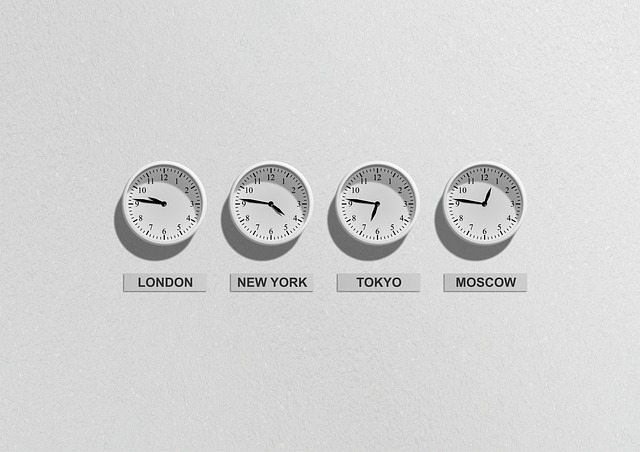Ever since I was a little girl, I have loved travelling. I don’t know if it’s the actual journey, the destination, the excitement of exploring, or a combination of all three but I know that I’m happiest in an airport, on a plane, arriving in a new country, and taking those first, tentative steps to discovering the culture of a new place.
 That desire to travel has followed me my entire life. All through university and into my first job. Onto my second job. And my third. And on it went. My itchy feet syndrome came up regularly in conversation: Have I booked another trip yet? When am I next flying off? What fun stories can I regale them with from my last trip? I would take notes on my travels and dream of writing a book of short stories one day.
That desire to travel has followed me my entire life. All through university and into my first job. Onto my second job. And my third. And on it went. My itchy feet syndrome came up regularly in conversation: Have I booked another trip yet? When am I next flying off? What fun stories can I regale them with from my last trip? I would take notes on my travels and dream of writing a book of short stories one day.
I put my wanderlust to the back of my mind as best I could and proceeded to build a career for myself in the environmental industry. That was my second love – the environment. When I graduated with an environmental degree, I got my first lucky break and found a job with the then Department for Environment working in the policy team. The job was interesting, but policy work bored me to tears. Things moved at a glacial speed whereas I thrived on the excitement and fast pace of project work.
Soon enough, I got lucky again. An internal move saw me land a job that allowed me to combine the two: promoting the environmental sector and travelling to Asia to do it. I got the excitement and the travels!
But cutbacks meant it couldn’t last forever, so after a couple of years I moved into environmental exhibitions marketing. That was my first experience of copyediting. In fact, it was probably the first time I’d ever heard the term. I wrote and edited advert copy, worked with designers on banners and flyers, and cut deals with trade magazines on placement and promotion. When the time came to proofread the show catalogue before it went to the printer I relished the detailed work and the opportunity to set things straight. This was other people’s businesses we were dealing with; we had to get it right.
I loved it, but not enough. Exhibitions were fun, but not what I wanted to do with the rest of my life. The environment sector pulled me back in and I settled into consultancy for the next decade. It had everything that I loved: I worked on all sorts of projects, large and small; I managed teams of specialists, juggling information and acting as the liaison between them and clients; I compiled reports from multiple authors, copyediting and proofreading before they went into the public domain; I even got to do a little travelling from time to time to unusual and exciting places.
By now I had hit my forties. Life has a funny way of reminding you what’s important when you get there. Call it a mid-life crisis, call it reality hitting, but a little seed planted itself in my mind and this time it wouldn’t go away – travel. Just get on a plane and go! Before long, that niggling thought became a screaming siren that I could no longer ignore.
I quit my job and booked a one-way ticket to Colombia. I was going to spend four months travelling around South America to get this out of my system and then get back to work. Even if it was only to save enough money for the next adventure. I blogged my way around six countries, documenting the stories that could one day make their way into that book, assuming I ever get around to writing it.
I remember it being a bright afternoon in Cusco, Peru, and I was walking up a cobblestone street filled with tourist shops when I made the decision. I realised that I couldn’t face another job and another decade of living in London, so I had to find a way of working while I travelled. I had met all sorts of people on my journey and one of them was a proofreader. It got me thinking … Don’t I already do that – at least in some form?
On my return, I made a call to the then SfEP (now the CIEP): What did I need to do to become a proofreader? They recommended the Publishing Training Centre, so I enrolled onto their Basic Proofreading course and studied before and after work. I gave myself a year to complete it, save up enough money and make a start on finding some clients.
It took 18 months. By the time my bags were packed I had a new career as a proofreader and copywriter and had four regular clients: a website designer who needed a proofreader and writer for the sites he built for tradespeople, retail and service providers; an agency that matched proofreaders with dyslexic and disabled students who required proofreading services; a financial services provider who needed a little extra help with their corporate communications; and an existing environmental client who wanted to retain my services as a freelance.
I also had a one-way ticket to Cambodia and a plan to spend the next few months travelling around Asia. After that, who knew?
 This month marks two years since I packed up my flat and my bags and I haven’t looked back. Along the way I have spent time in 12 different countries and continued to add new clients to my books.
This month marks two years since I packed up my flat and my bags and I haven’t looked back. Along the way I have spent time in 12 different countries and continued to add new clients to my books.
None of my clients are in the traditional publishing sector; it’s an area I know nothing about and trying to break into it seemed like an exercise in futility. Instead, I focused on what and who I knew. I spread the word about my new career and lifestyle and those that heard it spread it further. I leveraged the work experience I had from my previous careers and used it to demonstrate what I could do.
I still work in the environmental consultancy sector, albeit in a more strategic and reviewing role, and the various parts of my life have begun to overlap. One environmental client recently asked me to proofread a bid they had going out, and the travel blogger I proofread for loves the extra edits and suggestions he gets from me from places I’ve been to that he’s writing about.
I have done some very interesting work and I have done some mind-numbingly boring work. I have written website copy and blogs for accountants, plumbers, personal trainers, and wedding gown retailers – most of which I know nothing about so have had to learn, and fast. I have proofread theses and essays from subjects as varied as ecology, law and socioeconomics, newsletters on financial planning, and website content for restaurants, dentists, and market traders.
But I get to work at my own pace, in a location of my choosing, and without having to sweat my way to work on the tube. I learn something new from each proofreading and writing job that I do, and with each one I realise how much more there is still to learn. And I’ve already got the next exciting venture on the go, bringing it all together: a website for those who want to travel but are afraid to go it alone. If I can do it, you can do it too, whether you want to take your work with you or not.
 Not that long ago Christina Petrides packed up her high heels and gave up her London Oyster card to work as a freelance. Having worked in the environmental and marketing sectors for nearly two decades, she now runs her own copywriting, proofreading and environmental consulting business. She is a life-long traveller; and just one of an increasing number of digital nomads making the most of good WiFi and flexible working.
Not that long ago Christina Petrides packed up her high heels and gave up her London Oyster card to work as a freelance. Having worked in the environmental and marketing sectors for nearly two decades, she now runs her own copywriting, proofreading and environmental consulting business. She is a life-long traveller; and just one of an increasing number of digital nomads making the most of good WiFi and flexible working.
CIEP’s Cloud Club is made up of a number of CIEP members located in countries around the world, together with members who are in far-flung parts of the UK and find it almost impossible to get to local group meetings – perfect for digital nomads!
Proofread by Joanne Heath, Entry-Level Member.
Posted by Abi Saffrey, CIEP blog coordinator.
Photo credits: Bogota, Colombia – Jorge Gardner on Unsplash; Krong Siem Reap, Cambodia – Kevin Tomsett on Unsplash.
The views expressed here do not necessarily reflect those of the CIEP.



